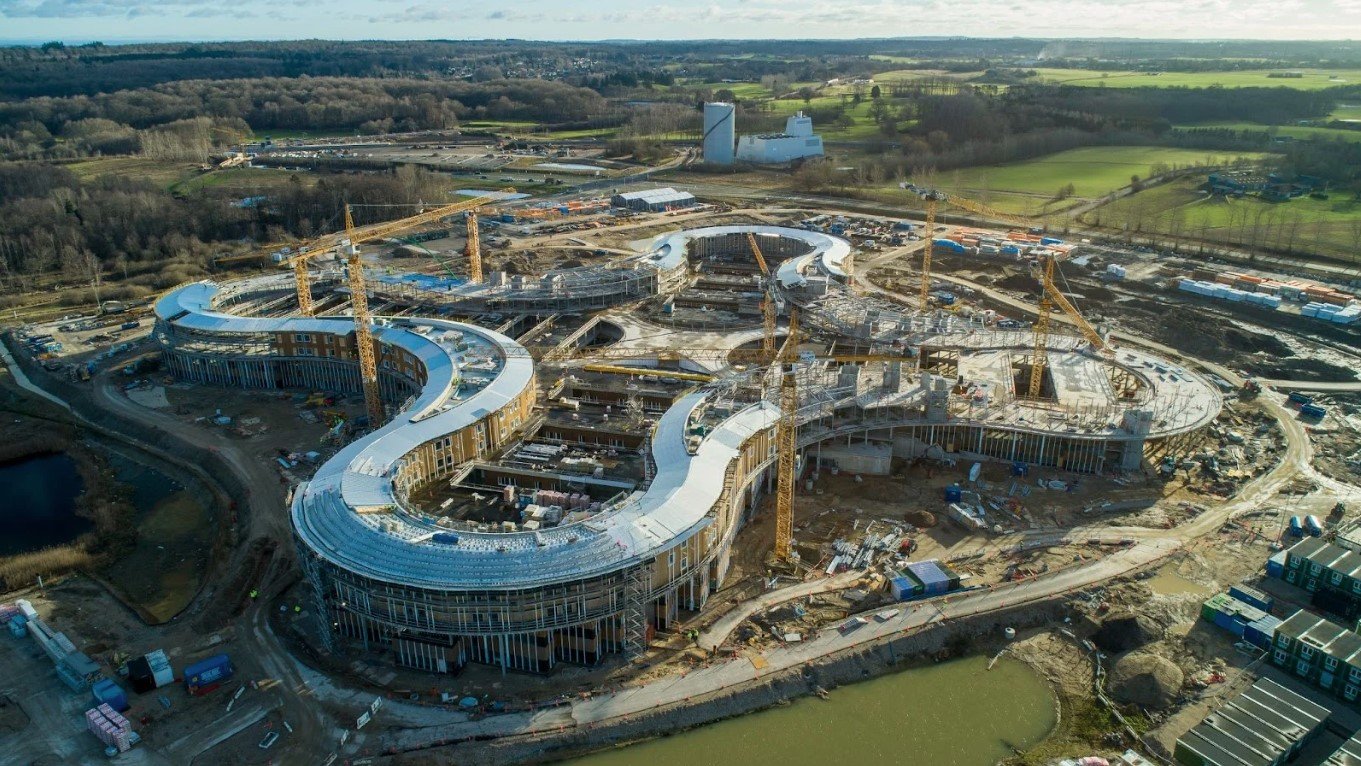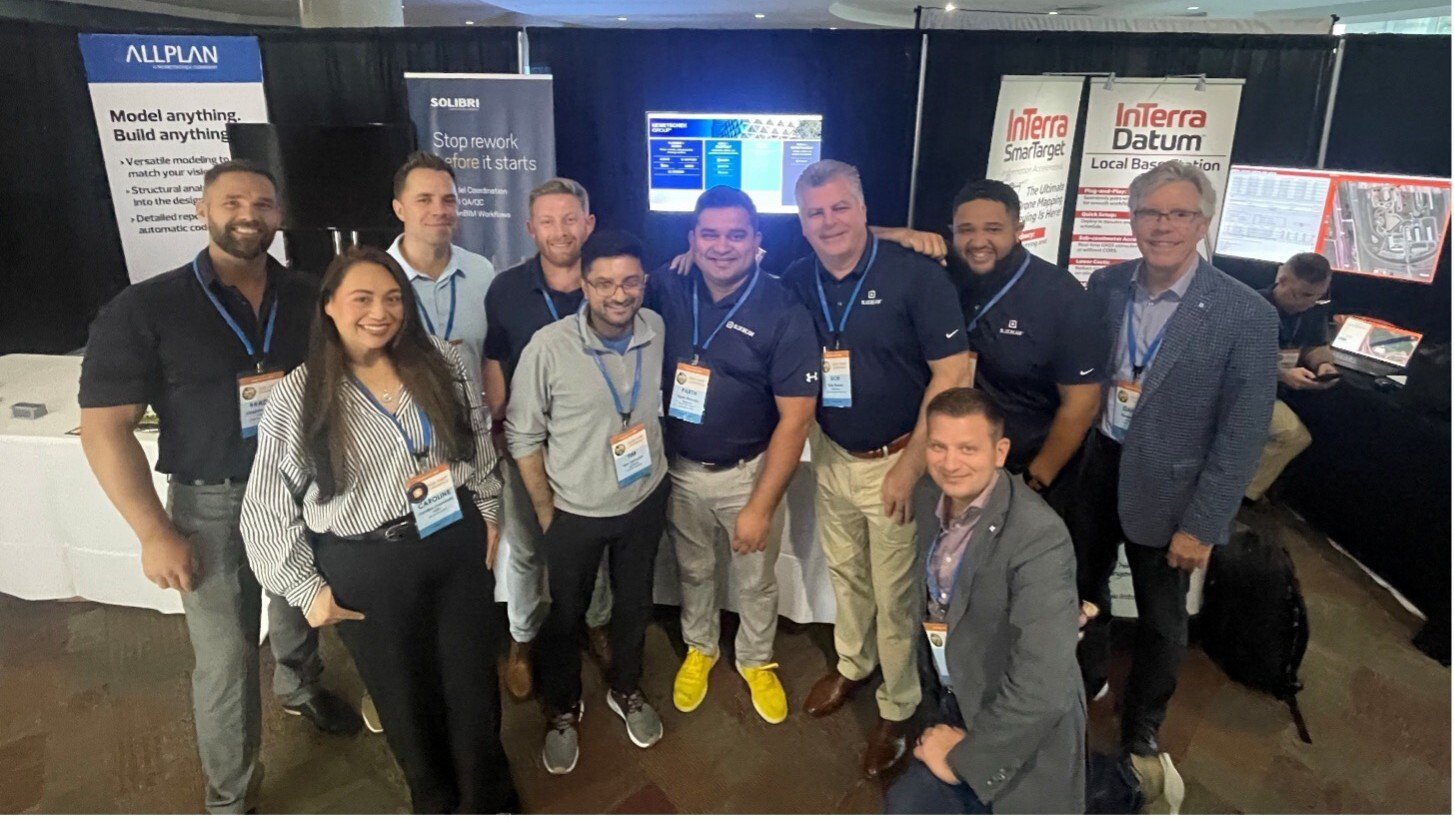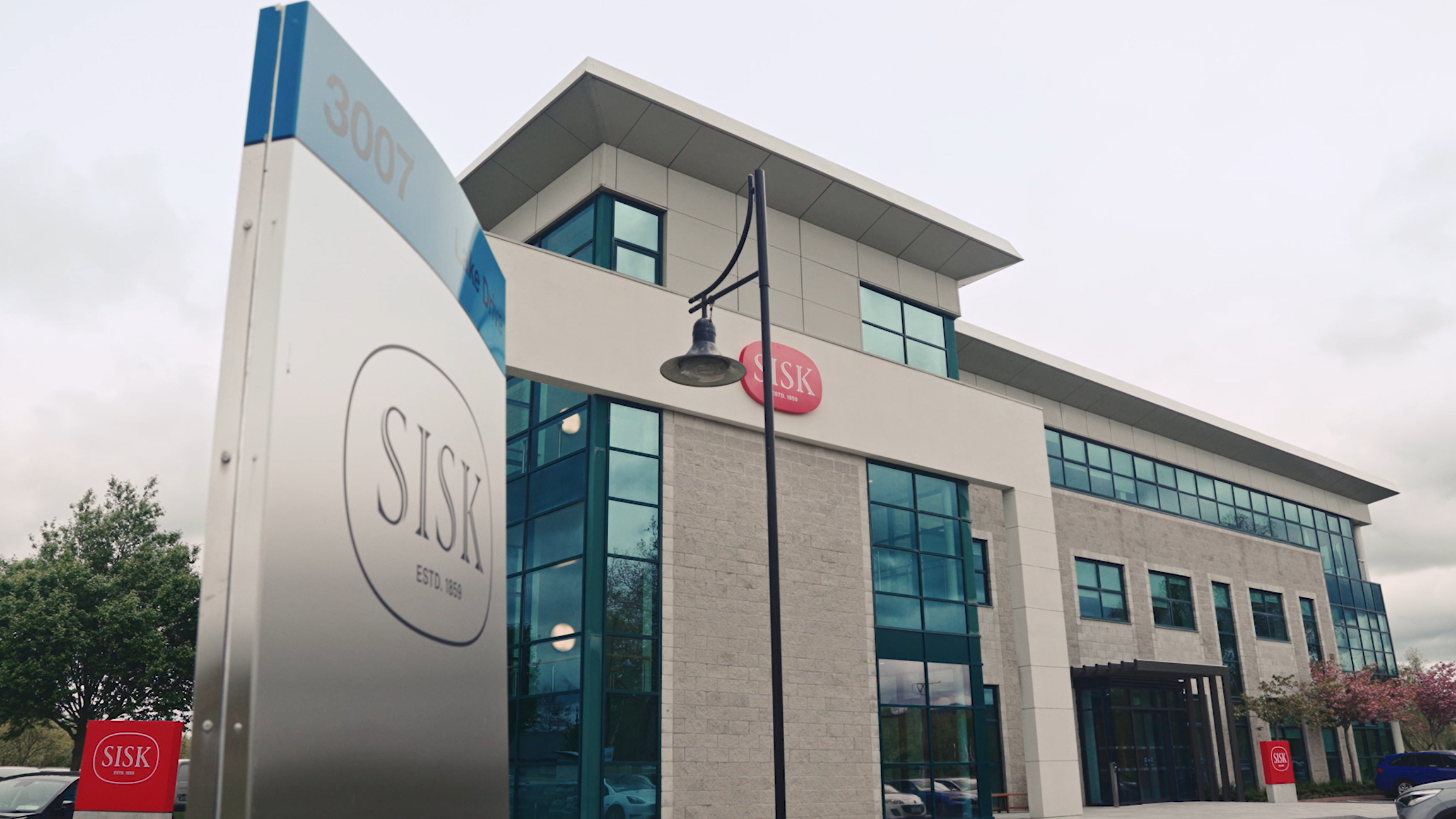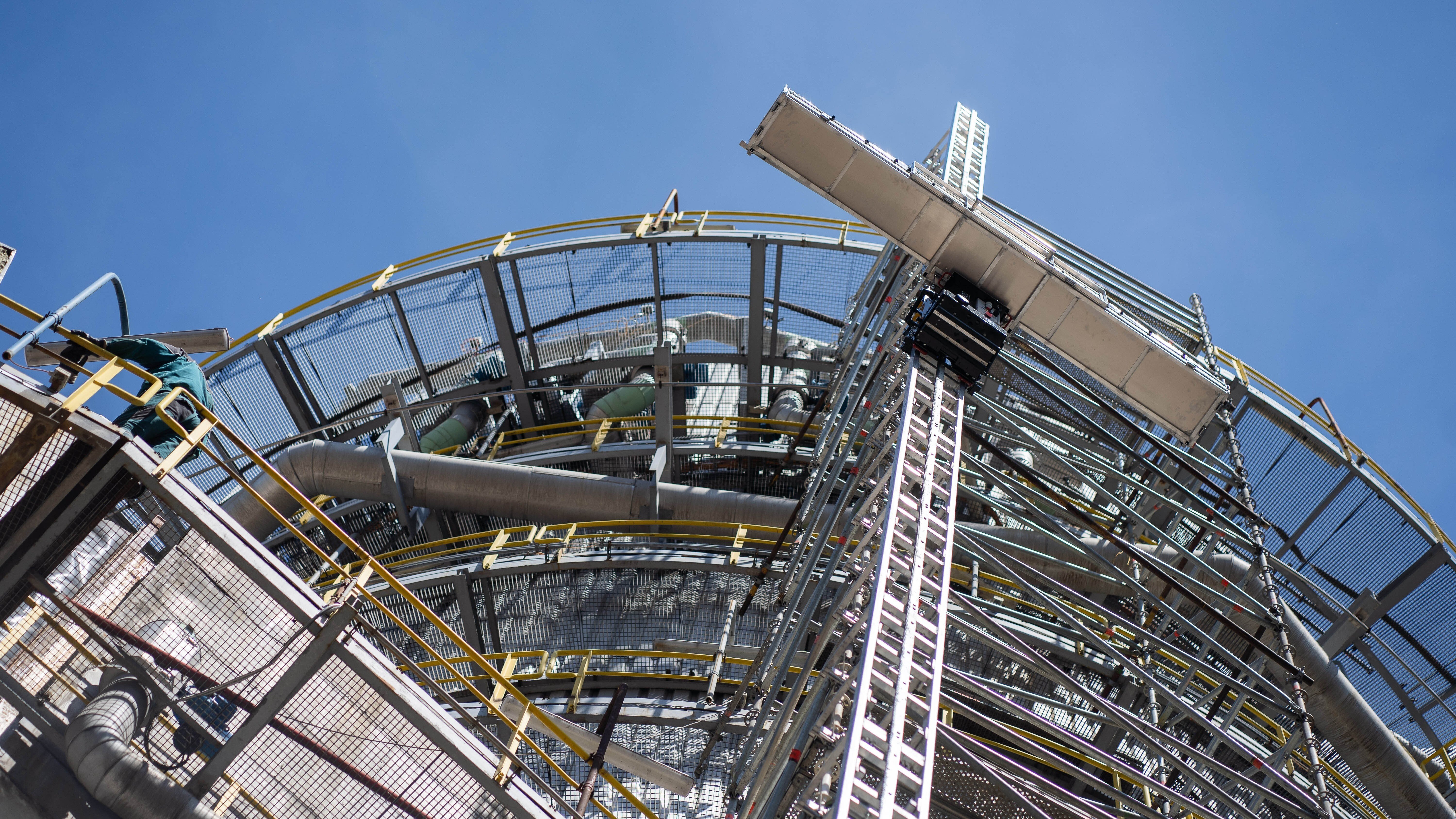Revolutionizing Hospital Construction: Reducing Risks and Ensuring Quality at Nyt Hospital.
Author
Frederico Valente
CEO at Imerso AS
This article belongs to the collection Sustainability
To the topic pageImerso is a Norway-based deep-tech company that combines BIM, Reality Capture, and AI technologies to automate construction site supervision and quality inspections with one simple workflow. With the software, construction companies can cut project risks and delay costs with real-time monitoring of site status and work quality.
Revolutionizing Regulatory Compliance in Fire Wall Constructions with Imerso AI
Ensuring regulatory compliance of fire wall constructions is getting a high-tech boost. The construction team behind the iconic new Nyt Hospital Nordsjælland near Copenhagen used Imerso construction AI technology to achieve remarkable results: The team enhanced work productivity while preventing costs and delays worth €5.2 million during the construction of the superstructure.
Inspired by this success, the team led by Project Manager Anders Kaas has since been eager to explore the potential of the technology in other areas. The opportunity arose to address a topic that has traditionally posed significant challenges and expenses in numerous construction projects – ensuring regulatory compliance of fire barriers and fire wall constructions.
Attention Into Work Quality of Fire Wall Construction is Increasing
Recent fire incidents in the UK have raised concerns about fire-protection compliance, coinciding with stricter regulations in the construction industry. Not complying can lead to exorbitant repair costs and prevent critical societal projects. In Denmark, the Niels Bohr university construction faced an infamous case in late 2021, with over 10,000 fire closures improperly done, causing indefinite delays. Vejdirektoratet’s construction director Erik Stoklund Larsen expressed his frustration, prompting the Roads Directorate to investigate fire wall construction quality. Motivated by this, NHN's construction team invested in Imerso's AI for proactive construction quality monitoring, aiming to reduce fire-safing compliance risks and enhance overall project safety.
What is a Fire Wall Construction and what are its Challenges?
Critical infrastructure must meet numerous fire-safety codes. Fire barriers, walls, doors, and stopping materials are strategies preventing fire, smoke, and gas spread in buildings. A key construction challenge involves fire-safing interfaces between rooms or floors, with openings for technical services. Engineers may employ solutions like 2-hour fire-rated walls. Manufacturers, including Knauf, test systems for performance and official fire ratings. However, system efficacy hinges on precise assembly per instructions. In complex projects like Nyt Hospital Nordsjælland, adherence to fire-stopping regulations is crucial, given multiple operating rooms, radiation-shielded walls, and intricate technical equipment layers.
In three months, Imerso identified potential issues in fire-rated wall installations, notably with Fire Section and Fire Cell walls. Metal stud framings’ specific placement is crucial for preserving the intended fire rating. A challenge arises when subsequent teams struggle to install planned technical equipment, resorting to cutting metal studs, compromising the wall's fire rating. This predicament results from the absence of precise metal stud positioning in BIM, contrasting with well-defined technical installations in BIM that construction teams must strictly adhere to, avoiding disciplinary clashes.
A Typical Sequencing Conflict Arises
Designers require on-site teams to install metal framing according to specifications and BIM models for technical services. Fire-rated wall stud installation involves framing encasing boxes around openings for specified technical installations, ensuring a proper fire seal. On-site teams, however, need coordinated planning to finalize technical MEP/HVAC layouts before partition walls are erected. Ideally, openings should be prepared before installing technical services, demanding accurate overlay of service layouts on partition drawings. This is seldom done, as design teams often optimize layouts during coordination, impacting metal wall stud placement. This sequencing challenge poses a significant project risk, particularly when fire partition walls are closed from both sides, hindering visibility. Damage to wall studs during later installations can compromise the wall's fire integrity.
Checking Work Quality of Fire Rated Wall Installations with Imerso AI
Imerso empowered Nyt Hospital Nordsjælland's construction team to boost their site supervision 15-fold by enabling them to independently conduct 3D scanning activities, a task traditionally deemed time-consuming and requiring expert surveyors. The Imerso platform analyzes the on-site As-built environment against BIM models, promptly reporting work status and deviations. Project Manager Anders Kaas prevented numerous costly issues within months, surpassing expectations. Additionally, Anders's team achieved precise on-site monitoring of fire-rated wall stud installations with Imerso, ensuring millimeter-accurate placement. Swift comparisons with BIM plans identified potential issues, promptly addressed to enhance building safety through efficient routine work status monitoring. Read the first 16 months' results here.
Combining Better Design Controls with Onsite Quality Checks
Another typical fire-stopping challenge in construction projects lies in the installation of technical equipment through wall openings in the concrete superstructure. To preserve fire-stopping capabilities, such equipment must be installed at specific distances from the structure and between each other, to allow appropriate fire-rated insulation.
The popular BIM coordination software Solibri, an industry-leading tool and partner of Imerso, recently launched new rulesets for validating safety-compliance automatically in the BIM models. But even in projects leveraging these accurate models, the problem happens when the onsite installations deviate from the planned design and remain undocumented, since traditional manual and visual controls using photos, 360° panorama images, and manual checklists are ineffective at flagging such changes. By analysing the onsite installation status against the BIM plans, Imerso helps the Nyt Hospital Nordsjælland team to prevent such hidden deviations from being overlooked, by detecting them instantly without human subjectivity.
Construction Companies Need More than New Software
The construction of each floor at the Nyt Hospital Nordsjælland project features hundreds of thousands of metal framings in fire-rated walls, making traditional construction control approaches reliant on manual checks, photos or panorama images too subjective and ineffective. This leaves dangerous blind spots in any construction project.
The Nyt Hospital Nordsjælland team estimates that Imerso is helping them monitor 15x times more onsite objects than other approaches, using only 7% of the resources.
Imerso empowers the team to proactively prevent issues by identifying deviations early and sharing detailed information promptly. However, success hinges on internal adoption and cross-partner collaboration, as emphasized by Anders. While Imerso surfaces potential project-threatening cases more effectively than traditional monitoring, it's not a perfect solution. Risks cannot be entirely eradicated, and the technology's efficacy depends on companies embracing new work methodologies. Despite contributing to significant savings in avoided rework costs for fire-rated wall cases, Anders stresses that the technology's most invaluable impact lies in mitigating the colossal risk of compliance issues preventing the hospital's full operation, emphasizing the immense financial and societal repercussions. Construction companies increasingly embrace automatic work quality monitoring systems like Imerso, ushering in a welcomed reduction in the longstanding risk of costly surprises and project complications.





